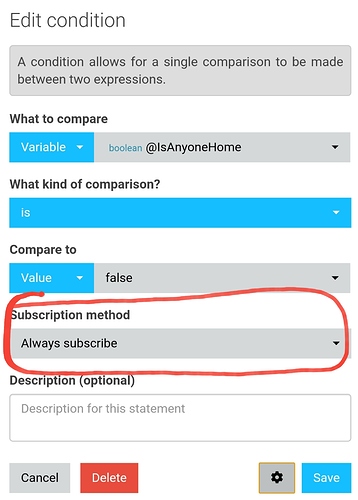I currently have 6 separate pistons that I use to manage whether or not I’m home/away; bedtime/asleep; morning and vacation modes.
Each piston triggers other pistons depending on what it controls, e.g. my away piston locks the door. Some of the pistons have multiple triggers to cover any scenario.
I’m curious how others control their location/mode statuses; one piston or many? Use them to flip virtual switches or control pistons directly?
I’d appreciate any thoughts on this!

